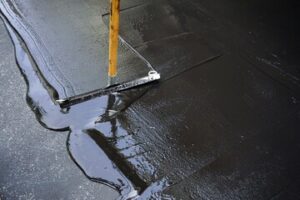Your septic system is a buried tank that takes waste from your house. Solid waste settles in the bottom, while oils and fats float to the top. If your septic tank gets clogged, wastewater can back up into your house.

Proper maintenance from septic service professionals keeps your home healthy and comfortable. Regular septic system pumping and cleaning can also help you avoid costly repairs in the future. Visit Website to learn more.
Septic systems are personal onsite wastewater treatment systems that process blackwater (toilet wastes) and greywater (kitchen sink, bathtub and laundry water). In addition to the obvious health benefits of proper septic system installation, it also prevents groundwater contamination and reduces or eliminates environmental hazards. Whether you’re building a new home or upgrading your current septic system, it’s essential to find a licensed septic installer and get a detailed quote before work begins.
A thorough site evaluation, permitting and excavation are a few of the main steps in septic system installation. The size of your tank and drain field will be determined by a soil test that takes into account the soil type, which may change the system design and impact costs. Choosing the right system for your property will help to reduce future repair and maintenance costs, and ensure that the system meets local regulations.
During the installation phase, the team will carefully lower the septic tank into an excavated hole and connect it to the inlet and outlet pipes in your home. A distribution box is then installed to evenly distribute effluent to the drain field lines, and risers are placed for easy access for future maintenance.
After the septic tank and leach field are completed, the drain field is covered with a layer of gravel and planted with grass for an attractive landscape. A well-maintained septic system will last for 20-30 years with regular inspections and maintenance.
Unpleasant odors near the septic tank or drainfield indicate that the system isn’t working properly and requires immediate attention. This could be due to a cracked tank, blocked vent or a saturated drainfield.
An improperly installed septic system is expensive to repair, and can cause serious problems with your water and waste management. The best way to protect your septic system investment is to consult and have them provide you with a professional septic system design that addresses your unique needs, soil conditions, and budget. The design will also ensure that your septic system will be compliant with all local codes and regulations, helping you avoid fines and the expense of replacement.
Pumping
A septic system is designed to treat wastewater and disperse it through a drain field. It’s important to regularly pump your septic tank, so that solid waste doesn’t build up and cause a backup. Pumping is typically done every three to five years, depending on your septic system size and the number of people in your household.
A clogged toilet, sink or bathtub is an indication that your septic system may need to be pumped. You’ll also want to call a septic service if you notice strong sewage odors coming from your home or yard. This is a sign that your septic system’s ventilation system is clogged, which can result in toxic fumes entering the home.
The septic tank is the first part of a residential wastewater treatment system, and it stores waste until the bacteria in the drain field can process it. Wastewater flows from your home into the septic tank through a series of pipes called a piping network. The septic tank contains a sludge layer and a scum layer, which are comprised of waste particles. Grease and other lightweight materials float in the scum layer, while solid waste is contained in the sludge layer.
Once the septic tank has been pumped, a technician will inspect it to make sure all sludge and scum are completely removed from the tank. They will also examine the inlet and outlet pipes for any damage or clogs.
When it’s time to have your septic tank pumped, you’ll need to clear a path for the truck that will be pulling out the contents of the tank. This will help to speed up the pumping process and prevent any unnecessary delays or complications.
The last step in septic tank pumping involves the use of a vacuum truck to remove the sludge and scum layers from the tank. It is also important to have the lines that connect to the tank flushed, so that any accumulated debris or blockages are removed from the line.
When preparing for your septic tank pumping, it’s important to keep in mind that the entire process can take up to two hours. It’s essential to schedule your septic tank pumping in advance, and to ensure that the septic service you choose can get there on time.
Cleaning
Every time you flush a toilet, take a shower, wash dishes or run the washing machine, solid waste and liquid wastewater travel through your home’s plumbing and into the septic tank. The waste will eventually reach the bottom of the septic tank, where it will be decomposed and dispersed into the soil. However, septic tanks need to be regularly pumped and cleaned to remove the buildup of solid waste, or sludge, which can reduce the tank’s capacity and lead to clogs and backups in the plumbing system.
During a routine cleaning, septic tank professionals will inspect the septic tank to determine its size, condition and the amount of sludge and scum accumulation. They will also check the drainfield to ensure it is functioning properly and recommend any necessary repairs or replacements. The tank will then be pumped out using specialized equipment, and the sludge is transported to a designated disposal site.
Before the work begins, septic tank professionals will need to locate the septic tank access point. This is usually a small cover or lid located above the tank, and it will need to be removed in order for the pros to pump and clean your septic tank.
Once the septic tank is accessible, the pros will uncover both of the tank compartment lids. This can be a difficult task, as corrosion and general wear and tear on the lids can make them brittle and easy to break. Once the lids are open, the septic tank professional will insert a hose into each of the septic tank compartments to pump out all of the waste.
Afterwards, the septic tank professional will examine the septic tank components for any signs of damage or issues and then replace the septic tank lid. They will also inspect the drain field to make sure it is free of clogs and other problems.
Properly maintaining your septic tank and system is crucial to the health of your family and the environment. Regular pumping and cleaning prevents waste blockages, reduces odors and extends the life of your septic system.
Repair
When your septic system is damaged, it affects more than just the pipes inside your home. Sewage leaks, clogged drain lines, and other problems strain plumbing components and can cause damage to the groundwater and landscaping surrounding your property. Fortunately, most septic tank issues can be prevented by regular maintenance and cleaning. Taking the time to keep up with these essential tasks extends the lifespan of your septic system and protects the health and safety of your family.
If you notice a septic tank problem, contact a professional septic service to resolve it as soon as possible. These companies can inspect your septic system for signs of problems, including clogged pipes and sewage leaks. They can also pump and clean your septic tank to remove solid waste and prevent clogs.
Septic systems can become damaged by products that are not intended for septic disposal, such as dental floss, paper towels, and feminine hygiene products. These materials can clog the pipes and force them to overflow.
Getting a professional septic service to repair these problems can help you save money and prevent further damage to your home. A septic technician has training in handling dangerous bacteria and gasses that may occur when opening the septic tank lid. They can use cutting blades to clear out clogged drain lines and restore full function to your septic system.
A septic tank can crack or break, and the absorption field can become damaged by heavy vehicles or improper use of the system. When these issues are left untreated, they can cause extensive damage to your property and pose a health risk for the people living in your home.
The best way to avoid a costly septic tank repair is to have a septic system installed on your property and maintain it regularly. This will protect the health and safety of your family and the environment, prolong the lifespan of your septic tank, and reduce the amount of money you spend on repairs or replacements.
To prevent septic system problems, be sure to map out the septic tank and other system components with permanent stakes or have a septic system specialist mark them with a marker. Never drive or park a vehicle over the system, and keep long-rooted plants and trees away from the immediate area of the absorption field to prevent root infiltration.








